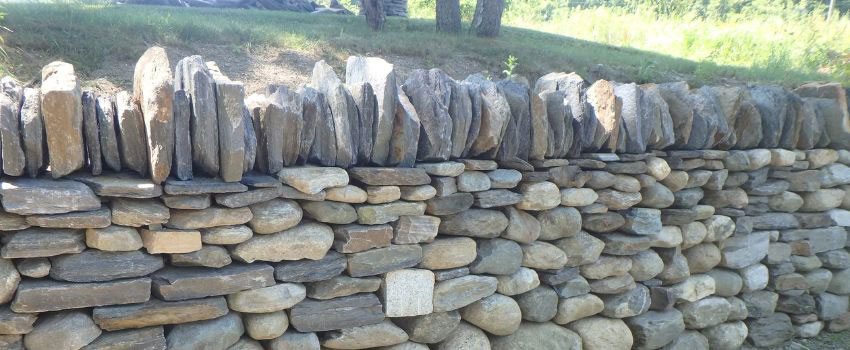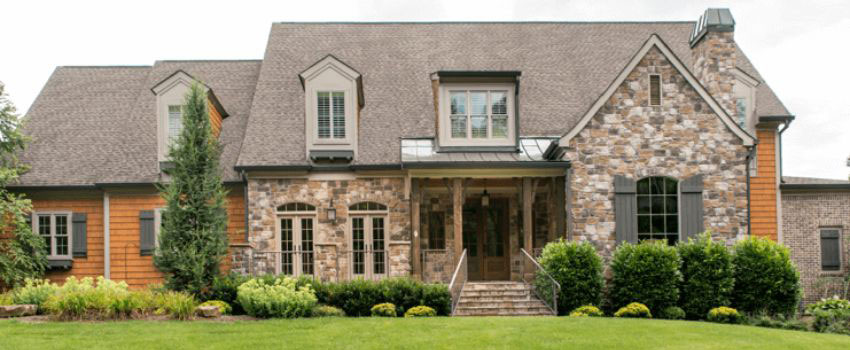Stonework And Masonry in Edemont
To maintain the beauty of your stonework and masonry in Edmonton AB, do this:
- Regularly clean the stone surfaces
- Apply a durable sealant
- Address cracks and chips in your stonework
- Ensure proper drainage
- Regularly inspect for moss
- Employ seasonal maintenance tips
- Enhance the beauty of your stonework through color-matching techniques
Didn’t understand step 7? Talk to us at (780) 710-3972.
1. Regularly clean stone surfaces to keep your stonework and masonry looking their best and prevent long-term damage
Start by identifying the type of stone or masonry you’re dealing with, as different materials require different care. For instance, granite is more durable than marble, and brick can be more porous than limestone.
First, dust the surfaces regularly using a soft brush or cloth to remove loose dirt and debris. This prevents buildup that can lead to staining or erosion.
Next, gently scrub the stone or masonry using a mild, pH-neutral cleaner mixed with water. Harsh chemicals can damage the material, so it’s best to avoid them.
After cleaning, rinse the area thoroughly with clean water to guarantee no residue is left behind. Dry the surfaces completely using a soft towel, as standing water can cause discoloration or deterioration over time.
If you notice any stains, you should address them promptly with appropriate stain removers designed for stone or masonry.
Regular maintenance keeps your stonework and masonry beautiful and extends their lifespan, saving time and money on repairs.

2. Apply a durable sealant to protect the surfaces from moisture and stains
Sealants create a barrier that prevents water from seeping into the stone, reducing the risk of damage caused by freeze-thaw cycles and mold growth. They also help maintain the stone’s natural beauty by preventing stains from oils, food, and other substances.
First, choose the right type of sealant. There are penetrating sealants that soak into the stone and form a protective layer from within, and surface sealants sit on top and act as a shield. Penetrating sealants are generally preferred for outdoor stonework because they allow the stone to breathe while providing durable protection.
Before applying the sealant, ensure the surface is completely dry. Any residual moisture can get trapped under the sealant and cause issues later.
Using a brush, roller, or sprayer, apply the sealant evenly across the surface, making sure to cover all nooks and crannies. It’s important to follow the manufacturer’s instructions for drying times and recoating, if necessary.
3. Address cracks and chips in your stonework to maintain its structural integrity and appearance
When you spot a crack or chip, act quickly. Small cracks can expand over time, and chips can become larger, leading to more serious problems.
First, clean the affected area thoroughly, removing dirt or debris. This ensures the repair material adheres properly.
For small cracks, you can use a specialized stone filler or epoxy. Carefully follow the manufacturer’s instructions, applying the filler into the crack and smoothing it with a putty knife. Once it’s dry, sand the area lightly to blend it with the surrounding stone.
You might need a stone repair kit with a color-matching compound when dealing with larger chips. Mix the compound and fill the chip, ensuring it’s level with the stone surface. Again, sanding is necessary to achieve a seamless finish.
Regularly inspect your stonework for early signs of damage so you can address issues promptly and prevent them from worsening. By taking these proactive steps, you can keep your stonework looking pristine and extend its lifespan.

4. Ensure proper drainage and sealant application to prevent water damage
To prevent water damage to your stonework and masonry, ensure proper drainage solutions, sealant application, and regular maintenance.
Proper drainage solutions
Water can be one of the most destructive elements to structures. When it accumulates, it threatens the surface and can penetrate deeply, causing cracks, erosion, and even structural failures over time. Ensuring water is effectively channeled away from your stonework is vital in preventing these issues.
Make sure your gutters and downspouts are functioning properly. They should direct rainwater away from the base of your walls. If water pools around the foundation, it can lead to severe damage and costly repairs.
Consider installing French drains or other subsurface drainage systems to manage groundwater effectively.
Grading the landscape around your property is another vital step. By sloping the ground away from your masonry, you prevent water from seeping into the structure.
Additionally, use permeable materials for pathways and patios to reduce runoff and promote better drainage.
Sealant application tips
Applying a high-quality sealant to stonework can greatly enhance its resistance to water damage. Choosing the right sealant is vital.
Opt for a breathable sealant that allows moisture to escape while preventing water from penetrating the surface. This helps maintain the integrity of the stone and avoids issues like cracking or spalling.
Before you start, ensure the stonework is clean and dry. Any dirt, moss, or mildew can interfere with the sealant’s ability to adhere properly. Using a pressure washer or a stiff brush with a mild detergent can help achieve a clean surface.
After cleaning, let the stonework dry completely, which might take a day or two depending on the weather.
When applying the sealant, use a sprayer or a brush for even coverage. Follow the manufacturer’s instructions regarding the number of coats and drying times. Typically, two coats provide ideal protection.
Pay special attention to joints and edges, as these areas are most susceptible to water infiltration. By taking these steps, you can prolong the lifespan and beauty of your stonework.
Regular maintenance practices
To prevent water damage, perform regular inspections and address any issues promptly. Check for cracks, gaps, or any signs of deterioration in your stonework and masonry. Water can easily seep into these small openings, causing damage over time. By identifying these problems early, you can apply sealants or make necessary repairs before the damage becomes extensive.
Ensure that your drainage systems are functioning properly. Gutters, downspouts, and drainage channels should be clear of debris and designed to direct water away from your masonry. Standing water or poor drainage can lead to water pooling around the base of stone structures, eventually causing erosion and weakening the foundation.
Another important practice is keeping your stonework clean. Dirt and organic material can trap moisture against the stone, promoting moss and algae growth, which can accelerate the deterioration process. Regularly scrubbing your stone surfaces with a gentle cleaner helps preserve their integrity and appearance.
Lastly, monitor the weather and take preventive action during heavy rainfalls or freezing temperatures. Applying temporary protective coverings can shield your stonework from excess moisture and ice formation, maintaining its beauty and durability.
5. Regularly inspect shady and damp areas for moss and mildew
Moss and mildew growths can make your masonry look unattractive and cause damage over time. To keep your stonework in shape, act quickly.
Regularly inspect stone surfaces, especially in shady, damp areas where moss and mildew thrive. When you spot these growths, use a stiff brush and a mixture of water and mild detergent to scrub them away. For more stubborn patches, a solution of one part bleach to four parts water can be applied, but be sure to rinse thoroughly afterward.
6. Employ seasonal maintenance tips for stonework in Edmonton AB
Each season brings its challenges, but with a little foresight, you can guarantee your masonry remains sturdy and beautiful year-round.
In spring, start with a thorough inspection. Winter can be harsh on stonework, so look for any cracks or damage. Address these issues early to prevent further deterioration. A good cleaning can also help remove lingering salt or debris from winter storms.
Summer heat can cause expansion in stone materials. To prevent moisture infiltration, check for and seal any new cracks. Regularly rinsing off dust and grime helps maintain the stone’s natural luster.
Autumn is the time to prepare for colder weather. Clean out gutters and downspouts to guarantee proper drainage. Consider applying a water repellent to protect the stone from freeze-thaw cycles that can cause cracking.

7. Enhance the beauty of your stonework through color-matching techniques, texture restoration methods, and sealant application
Choose the right colors and textures to complement the existing masonry.
Employ best practices for applying sealants to protect and elevate your stone surfaces.
Color matching techniques
Matching the color of new stonework to existing masonry is essential for maintaining a cohesive and visually appealing appearance. Take a strategic approach to color matching to guarantee a seamless blend.
First, analyze the existing stonework under natural light to capture its true hues. This helps identify the primary color tones and any subtle variations.
Once you’ve got a clear understanding, select new materials that closely resemble these tones. If exact matches are hard to find, use stains or tints to adjust the colors of the new stones. Applying a small sample of the stain to a test piece guarantees the shade will blend well before committing to the entire project.
Another effective technique is to mix stones from different batches. By integrating a variety of shades, you create a more natural and less uniform appearance, which often looks more authentic.
Finally, regular cleaning and maintenance of both old and new stonework can help maintain a consistent look over time, as dirt and weathering can alter the appearance of the materials.
With these methods, you can achieve a harmonious and aesthetically pleasing result.
Texture restoration methods
Restoring the texture of stonework and masonry is crucial for enhancing their aesthetic appeal and preserving their historical integrity.
When you focus on texture restoration, you are not just making your stonework look more attractive; you’re also extending its lifespan.
Here are some effective methods to restore and enhance the texture of your stonework and masonry:
- Cleaning and Descaling: The first step is to remove dirt, algae, and moss from the surface. Gentle pressure washing or chemical cleaners designed for stone help expose the original texture.
- Repointing: This involves renewing the external part of mortar joints, which can erode over time. By carefully repointing, you can bring back the crisp lines and textures that define the masonry.
- Surface Patching: To restore the surface texture of areas that have endured wear and tear, apply a patching compound that matches the stone. This method is useful for filling in cracks and gaps.
- Texturing Tools: Using chisels, brushes, and other texturing tools, manually recreate the original patterns and finishes. This approach guarantees that the stonework retains its unique character.
Sealant application
After restoring the texture, applying a quality sealant is the next step to enhancing the aesthetic appeal and durability of your stonework and masonry.
First, ensure the surface is completely dry; moisture can interfere with the sealant’s effectiveness. Choose the right sealant based on the type of stone or masonry. A penetrating sealant works best for porous stones like limestone or sandstone, while a surface sealant is suitable for less porous materials.
When applying the sealant, use a brush or roller for even coverage, following the manufacturer’s instructions. Work in small sections to avoid the sealant drying before you can spread it evenly. Be mindful of the temperature; applying sealant in extreme cold or heat can impact its performance.
After applying the first coat, let it cure properly, which usually takes about 24 hours. For added protection and enhanced visual appeal, a second coat might be necessary.
Get a Masonry Contractor Edmonton AB
Depend Exteriors is your go-to masonry contractor in Edmonton, AB. We offer durable services for both residential and commercial properties. With over 13 years of experience, we specialize in stonework, brick applications, and more, providing durable and aesthetically pleasing solutions.
Our team handles everything from new installations to repairs, ensuring your building’s design is both strong and sustainable. Whether you need cultured stone, natural stone, regular brick, or thin brick, we have the expertise to meet your needs.
Call (780) 710-3972 to schedule a consultation and enhance the beauty and durability of your property with our professional masonry services.




